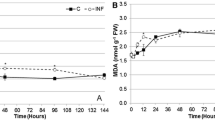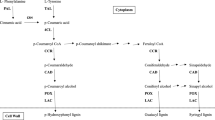Abstract
The Indian lac insect (Kerria lacca), a hemipteran, phloem sap sucking sedentary insect is an important bioresource which thrives on tender twigs of more than 400 plant species belonging to various genera and families. The most common commercial host plants for lac cultivation are big trees hence cultivation was concentrated mainly to dense forests across the country till last decade. Recently, a new bushy host plant belonging to the genus Flemingia has been introduced so that lac can be cultivated on farmlands like other cash crops. The insect is sedentary and feeds on the phloem sap of the host plants, the only source of its nutrition. Interestingly, the biological attributes of the insect as well as the qualitative and quantitative production of lac is influenced by the host plant on which the insect feeds upon. The present study was thus aimed at deciphering the effect of phloem sap constituents obtained from four plant host taxa belonging to the same genus Flemingia viz. F. semialata, F. macrophylla, F. bracteata and F. chapar (essential amino acids only-EAAs) on lac productivity. Moreover, a newer method for phloem sap collection i.e. Dot-blot in addition to the facilitated exudation using EDTA was also investigated. Dot-blot method for phloem sap collection also came out to be a promising method for field studies; although slightly higher concentration of EAAs were obtained from EDTA method, thus the later was used for further analysis. Phloem sap of four plant host taxa belonging to the same genus Flemingia were qualitatively and quantitatively analysed for seven EAAs (Arginine, Glycine, Leucine, Methionine, Phenylalanine Tyrosine and Valine). Amino acid concentration regime and further analysis done using statistical tools (ANOVA and PCA) points out the EAA concentration in the phloem sap is in congruency with the lac production data obtained through previous studies as F. semialata > F. macrophylla > F. chapar > F. bracteata. The present study thus scientifically points out that F. semialata can be a promising plant for lac cultivation on the basis of higher EAA content as compared to the rest three.


Similar content being viewed by others
References
Ahmad A, Kaushik S, Ramamurthy VV, Lakhanpaul S, Ramani R, Sharma KK, Vidyarthi AS (2012) Mouthparts and stylet penetration of the lac insect Kerria lacca (Kerr) (Hemiptera:Tachardiidae). Arthropod Struct Dev 41:435–441
Behmer S, Joern A (1993) Diet choice by a grass-feeding grasshopper based on the need for a limiting nutrient. Funct Ecol 7:522–527
Chang CL (2004) Effect of amino acids on larvae and adults of Ceratitis capitata (Diptera: Tephritidae). Ann Entomol Soc Am 97:529–535
Costello LR, Bassham JA, Calvin M (1982) Enhancement of phloem exudation from Fraxinusuhdei Wenz. (Evergreen ash) using ethylenediaminetetraacetic acid. Plant Physiol 69:77–82
Dadd RH, Krieger DL (1968) Dietary amino acid requirements of the aphid Myzus persicae. J Insect Physiol 14:741–764
Dinant S, Bonnemain JL, Girousse C, Kehr J (2010) Phloem sap intricacy and interplay with aphid feeding. C R Biol 333:504–515
Douglas AE (1993) The nutritional quality of phloem sap utilized by natural aphid populations. Ecol Entomol 18:31–38
Douglas AE (2003) Nutritional physiology of aphids. Adv Insect Physiol 31:73–140
Douglas AE (2006) Phloem-sap feeding by animals: problems and solutions. J Exp Bot 57(4):747–754
Frak E, Millard P, Le Roux X, Guillaumie S, Wendler R (2002) Coupling sap flow velocity and amino acid concentrations as an alternative method to 15N labeling for quantifying nitrogen remobilization by walnut trees. Plant Physiol 130(2):1043–1053
Fritz M, Jakobsen I, Lyngkjaer MF, Thordal-Christensen H, Pons-Kuehnemann J (2006) Arbuscularmycorrhiza reduces susceptibility of tomato to Alternariasolani. Mycorrhiza 16:413–419
Karley AJ, Douglas AE, Parker WE (2002) Amino acid composition and nutritional quality of potato leaf phloem sap for aphids. J Exp Biol 205:3009–3018
King RW, Zeevaart JA (1974) Enhancement of phloem exudation from cut petioles by chelating agents. Plant Physiol 53(1):96–103
Killiny N (2019) Collection of the phloem sap, pros and cons. Plant Signal Behav 14(8):1618181
Kovalskaya N, Owens R, Baker CJ, Deahl K, Hammond RW (2014) Application of a modified EDTA-mediated exudation technique and guttation fluid analysis for Potato spindle tuber viroid RNA detection in tomato plants (Solanum lycopersicum). J Virol Methods 198:75–81
Kumar A, Prasad RS, Singh O (2017) Comparative study of two bushy lac insect host plants Flemingia semialata Roxb ex WT Aitonand Flemingia macrophylla (Wild) merr and lac insect performance. J Entomol Zool Stud 5(5):1143–1145
Liu YH, Kang ZW, Guo Y, Zhu GS, Shah MM, Song Y, Fan YL, Jing X, Liu TX (2016) Nitrogen hurdle of host alternation for a polyphagous aphid and the associated changes of endosymbionts. Sci Rep 6:24781. https://doi.org/10.1038/srep24781
Mattson WJ (1980) Herbivory in relation to plant nitrogen content. Annu Rev Ecol Evol Syst 11:119–161
Nakashima J, Laosinchai W, Cui X, Brown RM Jr (2003) New insight into the mechanism of cellulose and callose biosynthesis: proteases may regulate callose biosynthesis upon wounding. Cellulose 10:369–389
Novotny V, Wilson MR (1997) Why are there no small species among xylem sucking insects? Evol Ecol 11:419–437
Pedigo LP, Rice ME (eds) (2005) Entomology and pest management. Pearson Education Inc., Upper Saddle River
Peel AJ (ed) (1997) Transport of nutrients in plants, 1st edn. Butterworth Heinemann, London, pp 116–119
Ringnér M (2008) What is principal component analysis? Nat Biotechnol 26(3):303–304
Ruuhola T, Ossipov V, Lempa K, Haukioja E (2003) Amino acids during development of mountain birch leaves. Chemoecology 13:95–101
Schaeffer CW, Panizzi AR (2000) Heteroptera of economic importance. In: Schaefer CW, Panizzi AR (eds) Economic importance of heteroptera. CRC Press, Boca Raton
Sharma KK, Jaiswal AK, Kumar KK (2006) Role of lac culture in biodiversity conservation: issue at stake and conservation strategy. Curr Sci 91(7):894–898
Smith CM (2005) Plant resistance to arthropods: molecular and conventional approaches. Springer, Dordrecht
Srivastava PN, Varshney RK (1966) Composition of the honeydew excreted by the lac insect Kerria lacca (Homoptera: Coccoidea) I free amino acids. Ent Expo et Appl 9:209–212
Thao ML, Moran NA, Abbot P, Brennan EB, Burckhardt DH, Baumann P (2000) Cospeciation of psyllids and their primary prokaryotic endosymbionts. Appl Environ Microbiol 66:2898–2905
Van Emden HF, Bashford MA (1971) The performance of Brevicotyne brassicae and Myzus persicae in relation to plant age and leaf amino-acids. Entomol Exp Appl 14:349–360
Varshney RK (1978) Composition of the honeydew excreted by the lac insect Kerria lacca (kerr) (Homoptera: Coccoidea II Carbohydrates. Bulln Zool Surv India 1(2):95–98
Varshney RK (1979) Aspects of intraspecific diversity in relation to the lacca complex of Indian lac insect (Homoptera: Tachardiidae). Proc Symp Zool Surv India 1:1–12
Varshney RK, Srivastava PN (1989) Amino acid and carbohydrate constituents of the Indian lac insect Kerria lacca (Homoptera: Coccoidea) at different stages of development. Ann de la Soc Entomol de France (NS) 25(3):380–382
Vashishtha A, Rathi B, Kaushik S, Sharma KK, Lakhanpaul S (2013) Phloem sap analysis of Schleichera oleosa (Lour) Oken Butea monosperma (Lam) Taub and Ziziphus mauritiana (Lam) and hemolymph of Kerria lacca (Kerr) using HPLC and tandem mass spectrometry. Physiol Mol Biol Plants 19(4):537–545
Wilkinson TL, Douglas AE (2003) Phloem amino acids and the host plant range of the polyphagous aphid Aphis fabae. Entomol Exp Appl 106:1–11
Will T, Furch ACU, Zimmermann MR (2013) How phloem-feeding insects face the challenge of phloem-located defenses. Front Plant Sci 4:336
Yang X, Malik NS, Perez JL, Liu T (2011) Impact of potato psyllid (Hemiptera: Triozidae) feeding on free amino acid composition in potato. Insect Sci 18:663–670
Ziegler H (1975) Nature of transported substances. In: Milburn JA, Zimmermann MH (eds) Transport in plants I. Springer, Berlin, pp 59–100
Zografou EN, Tsiropoulos GJ, Margaritis LH (2001) Effect of phenylalanine and tyrosine analogues on Bactroceraoleae gmelin (Dipt Tephritidae) reproduction. J Appl Entomol 125:365–369
Acknowledgement
The authors would like to extend their sincere appreciation to NAIP-ICAR for funding this research work. Also, the authors extend their sincere thanks to lal pathology laboratory, Delhi India for their technical help and Dr. S. Balaswamy, Department of statistics, Indira Gandhi National Tribal University, Amarkantak, Madhya Pradesh for understanding the statistical data.
Author information
Authors and Affiliations
Corresponding author
Additional information
Publisher's Note
Springer Nature remains neutral with regard to jurisdictional claims in published maps and institutional affiliations.
Rights and permissions
About this article
Cite this article
Kaushik, S., Vashishtha, A., Shweta, S. et al. Essential amino acid profiling of the four lac hosts belonging to genus Flemingia: its implications on lac productivity. Physiol Mol Biol Plants 26, 1867–1874 (2020). https://doi.org/10.1007/s12298-020-00860-9
Received:
Revised:
Accepted:
Published:
Issue Date:
DOI: https://doi.org/10.1007/s12298-020-00860-9




